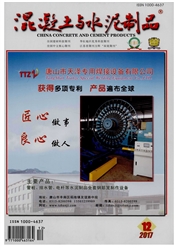

 中文摘要:
中文摘要:
通过双面剪切试验,研究了冻融环境下CFRP‐高性能混凝土界面粘结性能的发展规律。对比分析了未经冻融和经历25、50、100、150、200及300次冻融循环作用试件的破坏特征、剪应变分布、荷载滑移曲线、粘结承载力以及粘结破坏机理。结果表明,所有试件的界面破坏均发生在混凝土表层内,但随着冻融循环次数的增加,破坏界面有向胶层发展的趋势;经受冻融循环次数较少时(25、50次),界面的粘结强度、刚度及开裂荷载的变化不明显,甚至略微提高;但随着冻融循环次数的进一步增加,界面粘结性能有明显的变化,界面粘结强度、端部滑移量减小,刚度退化,初始开裂荷载水平降低,非线性特征增强。粘结极限承载力与混凝土立方体抗压强度均随冻融循环次数的增长存在先提高后下降的趋势,混凝土强度变化是界面粘结性能变化的最重要因素。
 英文摘要:
英文摘要:
By adopting double shear test ,the developing law of interface bonding properties between CFRP and high performance concrete exposed to freeze‐thaw environment was studied . The damage characteristics ,shear strain distribution ,the paths of the load‐slip curves ,adhesive capacity and failure mechanisms of specimens without freeze‐thaw damage and with 25 ,50 ,100 ,150 ,200 and 300 times freeze‐thaw cycle effect were compared and analyzed .The results showed that interface damage occurred within the concrete surface layer for all of the specimens ,but with the increase of freeze‐thaw cycles ,destroyed interface had the tendency to the adhesive resins layer .Subjected to less freeze‐thaw cycles such as 25 times and 50 times ,the interface bond strength ,rigidity and cracking load didnot change obviously ,even slightly elevated but with the further increase of freeze‐thaw cycles ,interface bond properties changed obviously .Interfacial bond strength and slippage in the end of CFRP decreasedThe rigidity degeneration and nonlinear characteristics were obvious andthe initial cracking load was lowered .The ultimate bearing capacity and the concrete cube compressive strength both declined after increasing with the grow th of the number of freeze‐thaw cycles .The change of concrete strength was an important factor for the changes of interfacial bond properties .
 同期刊论文项目
同期刊论文项目
 同项目期刊论文
同项目期刊论文
 期刊信息
期刊信息
